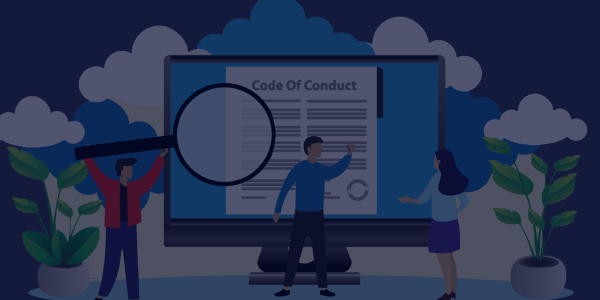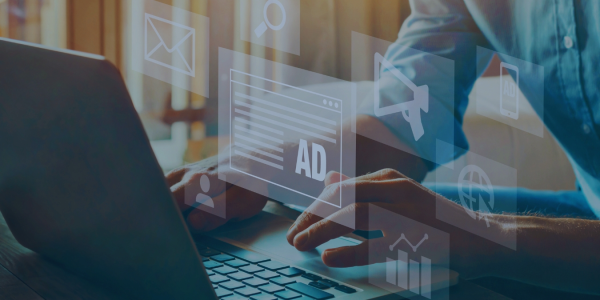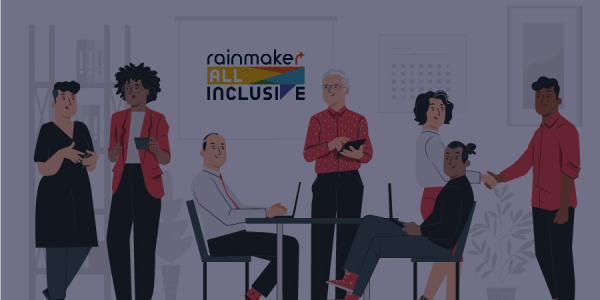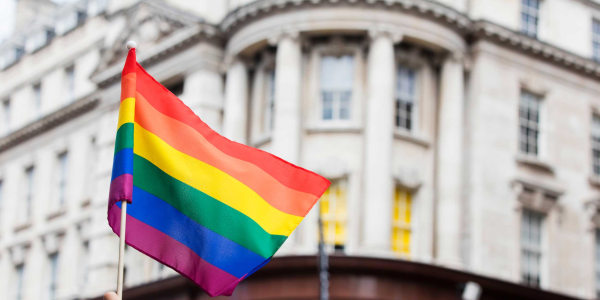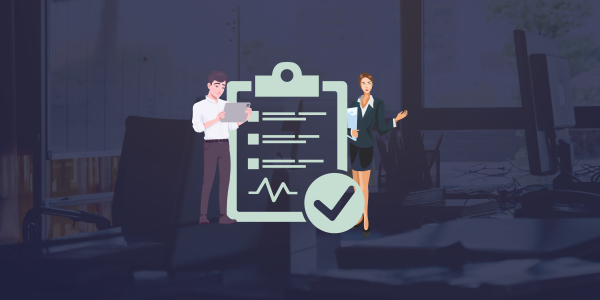In partnership, SHRM & Rainmaker conducted an exclusive Roundtable discussion on the above topic on December 9th, 2020. Together they deliberated on six critical questions around Diversity & Inclusion at Workplace.
Antony Alex, CEO, Rainmaker, moderated the engaging discussion for an hour and a half. Fourteen panelists, heavy hitters from various large and medium MNCs shared their valuable experiences and the insights they have acquired over the decades.
Here, I have tried to cull out the crucial takeaways in a succinct manner.
Do the best you know until you know better. Then when you know better, do better. – Maya Angelou
1, What are Diversity Training Programs doing wrong?
- We all have noble intentions. The fact remains that many of us are yet to learn about what will make D&I tick. We tend to look at Diversity Numbers separately, not at Diversity & Inclusion as an Integrated approach. Diversity is a number, but Inclusion is culture. It takes decades of effort to build a certain type of culture, almost like evolution. Focusing on Diversity alone is quicker and more comfortable, but it is wrong & narrow.
Takeaway: Look at Diversity & Inclusion at Workplace as integrated and not separately; otherwise, you will miss the bus.
- Unless the leaders talk enough about it, there is no way to make it happen. Talking about it every day by the leadership is one sure way of achieving it. Hence, business leaders need to lead the D&I agenda, with HR supporting & facilitating it. Sometimes we do it the other way around, & that is wrong.
Takeaway: Leaders need to include Diversity & Inclusion in the Workplace in their everyday talks and hold on to the reins themselves.
- Inclusion in the Workplace is not bringing people into what exists; it is ‘making a new space, a better space for everyone.’ Organizations promoting Equality need to understand why Equality will not work. Sometimes we forget that the journey of every community is different. For example, a male employee’s journey is more like a continuum, an unbroken series of things. In contrast, the journey of a woman employee ebbs and flows. Women go & come back & go again, based on the familial circumstances.
Takeaway: The one size fits all approach will not work. The conversation needs to shift from Equality to Equity.
2, How do we move beyond Diversity & cultivate a sense of belonging?
- The journey of D&I is a journey of cultural transformation but replete with minefields. Most of the aggressions are microaggressions. We can make multiple policies, but nothing will change if a Manager’s biased mindset remains the same.
Takeaway: To change someone’s perspective is a tremendous challenge.
- Every individual needs to feel appreciated. Since every individual is unique, there is something to value in everyone. When employees are appreciated, they will feel psychological safety. They will want to bring their whole selves to work. A person from a minority culture, another physically challenged person, another much older than others; can we genuinely make them all feel they belong? Everyone needs to feel respect & inclusion at workplace.
Takeaway: Everyone needs Empathy in abundance, not just the Diverse Groups.
- Understand the organization’s Pain Points through a D&I Survey before Deploying the D&I initiatives. But be mindful of the Survey Fatigue. Also, have more qualitative inputs from Focus Groups. Past employees bring in lots of pertinent issues. Glassdoor can give us some real hard-hitting reviews, and so can exit interviews.
Takeaway: We need to find out what our employees are saying.
3, Is providing a place at the table enough to overcome underlying biases?
- It is vital to have a place at the table and also have enough representation to get the organization’s focus to pivot to you. It is the first of the many building blocks you will need.
Takeaway: Representation is the first step to take to overcome underlying biases.
- It cannot be enough to provide a place at the table because Diversity is what you have; Inclusion is what you do. We need to realign the table itself. Inclusion is not just creating a place for the new-comer, but re-creating the area, so it better fits the new-comer.
Takeway: When providing a place at the table, we need to realign the table.
- Antony’s anecdote: “One of my colleagues Sumali had made a suggestion, but nobody gave it a thought. I repeated it, and everyone said, that’s great. Why did this happen? Is it a person in a position of power, or is it due to gender? This problem is there across organizations, and specifically, women struggle to make their ideas heard. This bias is something D&I Training / Sensitization can fix by bringing awareness to such situations through storyizing the message. Using dramatization, workshops / e-modules in employee diversity training can send strong messages of bias and how employees can call it out tactfully.
Takeaway: It is challenging to change the culture without any D&I Training / Sensitization.
- Sometimes organizations need to make some disruptive decisions, even if it gets people upset at first. Eventually, employees will realize it was for the better, for them and their organization. After all, D&I is not just the right thing to do but right for business.
Takeaway: Diversity Disruptions are essential to make Diversity & Inclusion at Workplace work- for the people & at the organizational level.
4,How do we create that mind shift from Good to Do to a Business Priority?
- Incorporate D&I into the core strategy & mission. Make D&I a prerequisite of the organization’s functioning. Every person, every department needs to understand why D&I is vital for the business. Having the hands & limbs together is crucial. The same rigour and scrutiny must be applied to D&I, as you would to other functions such as Marketing, Customer Experience, Finance.
Takeaway: Let D&I become your DNA.
- Take a hard call and fix some targets. Slowly and steadily, it will get into the system. Give it time; keep the conversation going.
Takeaway: Buy-In for Inclusion in the Workplace doesn’t happen overnight.
5, Say we get the leadership buy-in; what about allyship from other stakeholders?
- Building strong allies is essential for many marginalized communities because they help advocate, build partnerships, and sensitize other stakeholders. Employee resource groups work very well.
Takeaway: A bottom-up or top-down approach will not work.
- Allyship will help organizations tackle Diversity Fatigue. Have the D&I Champions cultivate a battery of Allies. The Champions need to team up with allies; otherwise working alone, can build up Diversity fatigue. By teaming up, they also gain from the collective wisdom of the group.
Takeaway: An integrated approach helps tackle Diversity Fatigue.
- Relate D&I to Talent Management, and then it’s not a fancy concept anymore. Strong belongingness will bring better communication, better governance, productivity, retention & therefore, business results.
Takeaway: Relate Diversity & Inclusion at Workplace to Talent Management. Better integration of both makes each more effective.
6, What are the metrics we should track for creating the D&I Business Case?
- We tend to copy other organization’s metrics rather than creating our own. Inclusion is something so intangible that we really can’t take it from others. Instead, it would be best if we carved out our own thing. You cannot borrow from others in a ‘keeping up with the Joneses’ kind of way.
Takeaway: Better not to import the metrics to measure your Diversity & Inclusion program’s success.
- Not every metric needs to be measured & reported. Some things can be observed and reported, like Gender-Neutral Language. Are we using it? Can we make this observable change? It is probably the easiest to start. Instead of Hey Guys!, say Hey Folks, or Hi Team. It’s like low-hanging fruit if there is one in Diversity & Inclusion at Workplace.
Takeaway: Some metrics can be observed & reported, like Gender-Neutral language.
- In Covid Times, the absence of attrition does not imply engagement. But building the ‘feeling’ of engagement, having the right conversations & educating the teams leads to Inclusion in the Workplace.
Takeaway: Going beyond the traditional metrics is required.
Let D&I become your DNA! – Rainmaker.
Panelists
Rukmini Giridhar (Strides Pharma)
Ishrat Humairah (Cognizant)
Bobby Patnaik (Infosys)
Sanaya Wadia (Asian Paints)
Priyanka Bhatnagar (Accenture)
Prachi Rastogi (IBM)
Pooja Singh (Startek, Aegis)
Preeti D’mello (TCS)
Sandeep Tyagi (Samsung)
Gaurav Vaishnav (Siemens)
Ans Joseph (Syngenta)
Chandani Kamal (HCL)
Gayathri Ramamurthy (Capgemini)
Seeja Sreedharan (Volvo Financial Services)
SHRM Co-hosts
Nida Shahid, Associate Director, and Amit Sethi, Regional Manager (West), SHRM India
Acknowledgment
We value the panelist’s insightful comments and would like to acknowledge that the author has tried to retain their expressions as much as possible. We appreciate the excellent support & assistance provided by the SHRM Co-hosts in putting this event together.
Author: Sumali Nagarajan
DISCLAIMER – No information contained in this website may be reproduced, transmitted, or copied (other than for the purposes of fair dealing, as defined in the Copyright Act, 1957) without the express written permission of Rainmaker Online Training Solutions Pvt. Ltd.


